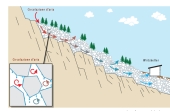












Idle dreamer





Tyler Ludens wrote:Really looking forward to what you develop Alex!





Buy Our Book! Food Web: Concept - Raising Food the Right Way. Learn make more food with less inputs
Off Grid Homesteading - latest updates and projects from our off grid homestead





Abe Connally wrote:I studied these a few years back, and the conclusion was, for the amount of cooling, they are really inefficient compared to other means. So, if you have to create the moving air with energy (like with fans, blower, compressor, etc), then you'd be better off with a closed loop refrigeration system. So, it depends on the local conditions and the source of moving air. If you have wind blowing from the same direction at least 60% of the time (14 hours of the day), then it could probably work, but I'd start with a scale model first.
I have to admit, I'm somewhat skeptical of the ice cave theory, unless there is a fire cave nearby. The thing with vortex tubes is that they separate cold and hot, so that heat has to go somewhere. If you are extracted enough cold to freeze a cave, then you're also extracting enough heat to cook a cave.
Fridge systems don't have to use freon for their working fluid, you can even use air. It's just a matter of compressing the working fluid, cooling it down, then letting it expand again.
Here's a design that uses a simple windmill and helps to explain the concept a bit: http://mb-soft.com/public3/selfsuff.html Scroll down to "Providing Refrigeration and a Food Freezer"
The zeolite/water designs have promise as well. Google zeolite refrigerator.




Buy Our Book! Food Web: Concept - Raising Food the Right Way. Learn make more food with less inputs
Off Grid Homesteading - latest updates and projects from our off grid homestead




Country oriented nerd with primary interests in alternate energy in particular solar. Dabble in gardening, trees, cob, soil building and a host of others.
 2
2




Author of The Rocket Powered Oven
I am leading the Permaculture Design Course and Appropriate Technology Course at Wheaton Labs in 2017.










Tim Barker wrote:Hi All I too am fascinated by vortex tubes but as one poster has already said they require compressed air to work. Now the (usually correct ) supposition is compressed air is very wasteful to produce and as i intimated most of the time thats correct but there are instances where that is not the case. Consider when we say compressed air the method we use to do the actual work of compressing the air is typically done either by and electric or gas driven compressor. Also when you compress air you produce heat so if you have a use for the heat from the compression process(compressor and motor) then that process just became more efficient. Obviously if the compressed air is a by product of some other process then its also good fit. Also if you just happen to have a trompe https://en.wikipedia.org/wiki/Trompe in your back yard then you are blessed. Trouble is the physical conditions for the location of a Trompe are somewhat limited. One other thing to note is Vortex tubes will also work on vacume so if you have a vacume source just lying around then happy days!
... A case in point was advising a student during one of my App tech internships on a treadle water pump they wanted to build. In the end the pump worked and pumped water but it was woefully innefficient because as i pointed out it was easy to get it to pump something but all the work on optomising was still to come and that was the hard part.
... Remember too that the greater our distribution network the greater our storage (think black poly pipe) and if that pipe is getting heated in the sun even better as we get more bang for our buck due to the increased pressure from the heated air not to mention that unlike water we dont need to pump it up hills or such as it effectively has little weight. I'm teaching an App Tech course at Paul's in the coming months and always cover Ranke Hilsch tubes and compressed air as i find the subject fascinating.
Country oriented nerd with primary interests in alternate energy in particular solar. Dabble in gardening, trees, cob, soil building and a host of others.




Work smarter, not harder.
 1
1




paul wheaton wrote:
So then I got to thinking: I wonder if a person could make a root cellar in such a way that it might actually be a freezer - with temps hovering around zero (F).
 1
1









|
What a show! What atmosphere! What fun! What a tiny ad!
The new kickstarter is now live!
https://www.kickstarter.com/projects/paulwheaton/garden-cards
|




